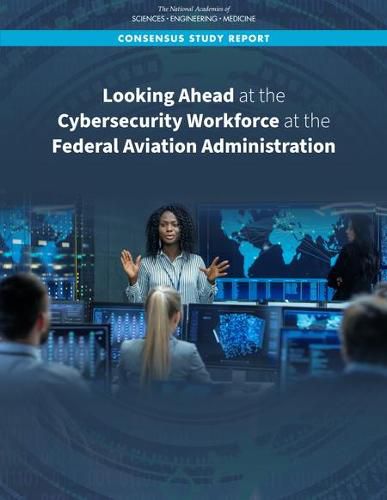Readings Newsletter
Become a Readings Member to make your shopping experience even easier.
Sign in or sign up for free!
You’re not far away from qualifying for FREE standard shipping within Australia
You’ve qualified for FREE standard shipping within Australia
The cart is loading…






The Federal Aviation Administration (FAA) has overseen significant upgrades to the technology used to manage aviation operations to increase the safety and efficiency of the National Airspace System (NAS). Though necessary to regular operations, these modern computing and communications systems provide a greater attack surface for criminals, terrorists, or nation-states to exploit and thereby increase the potential for cybersecurity threats to the NAS and its constituents.
The future safety and security of air travel will rely in part on the ability of the FAA to build a workforce capable of addressing the evolving cybersecurity threat landscape. Securing the computers, networks, and data that underpin modern aviation depends in part on the FAA having enough cybersecurity professionals (capacity) with the right knowledge, skills, and abilities (capability)). It also depends on the FAA’s workforce having sufficient diversity of backgrounds and experience. Such diversity is critical in analyzing cybersecurity problems and widely understood to be a functional imperative for effective cybersecurity programs.
At the request of Congress, the publication examines the FAA’s cybersecurity workforce challenges, reviews the current strategy for meeting those challenges, and recommends ways to strengthen the FAA’s cybersecurity workforce.
$9.00 standard shipping within Australia
FREE standard shipping within Australia for orders over $100.00
Express & International shipping calculated at checkout
The Federal Aviation Administration (FAA) has overseen significant upgrades to the technology used to manage aviation operations to increase the safety and efficiency of the National Airspace System (NAS). Though necessary to regular operations, these modern computing and communications systems provide a greater attack surface for criminals, terrorists, or nation-states to exploit and thereby increase the potential for cybersecurity threats to the NAS and its constituents.
The future safety and security of air travel will rely in part on the ability of the FAA to build a workforce capable of addressing the evolving cybersecurity threat landscape. Securing the computers, networks, and data that underpin modern aviation depends in part on the FAA having enough cybersecurity professionals (capacity) with the right knowledge, skills, and abilities (capability)). It also depends on the FAA’s workforce having sufficient diversity of backgrounds and experience. Such diversity is critical in analyzing cybersecurity problems and widely understood to be a functional imperative for effective cybersecurity programs.
At the request of Congress, the publication examines the FAA’s cybersecurity workforce challenges, reviews the current strategy for meeting those challenges, and recommends ways to strengthen the FAA’s cybersecurity workforce.